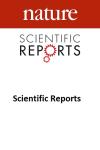Extended perceptive field revealed in humans with binocular fusion disorders

Binocular vision disorders or dysfunctions have considerable impact on daily visual activities such as reading. Heterophoria (phoria) is a latent eye misalignment (with a prevalence of up to 35%) that appears in conditions that disrupt binocular vision and it may affect the quality of binocular fusion. Our recent study, which used lateral masking (LM), suggests that subjects with binocular fusion disorders (horizontal phoria) exhibit an asymmetry and an abnormal pattern of both binocular and monocular lateral interactions, but only for the horizontal meridian (HM). The perceptive field (PF) is the fundamental processing unit of human vision and both masking and crowding depend on its size. An increased PF size is found in amblyopic populations or in young children. We hypothesized that the PF’s size would be asymmetric only for the phoric group (larger along the HM). We estimated the PF’s size using two different methods (LM with equal-phase and opposite-phase flankers). Phoric subjects exhibited a larger binocular PF size, only for the HM, confirming our hypothesis of an asymmetric PF size. However, the monocular PF size of phoric and control subjects was similar. Phoria affects the PF’s size similarly to meridional amblyopia but without being attributed to abnormal refraction. We suggest that these findings could help explain the inter-observer variability found in the masking literature and the reading difficulties often encountered in subjects with high heterophoria. Since perceptual learning can reduce the PF’s size, further investigation of training may provide a novel therapy to reduce some symptoms related to heterophoria.
תאריך עדכון אחרון : 19/02/2024



